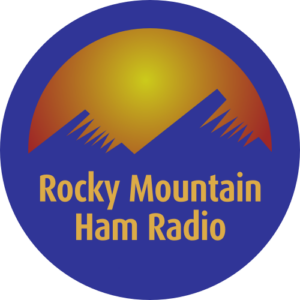The Rocky Mountain Ham Radio DMR Repeater System is based upon DMR Tier 2 and the Time Division Multiple Access (TDMA) protocol. Tier 2 and TDMA allows us to deliver two simultaneous conversations on a single repeater. Any radio attempting to utilize the RMHAM DMR system must strictly adhere to the DMR Tier 2 standard otherwise repeater system operation will be severely degraded.
The initial release of the Baofeng DM-5R radio is DMR Tier 1 only. It does not comply nor adhere with the DMR Tier 2 standard – this is FULLY INCOMPATIBLE with RMHAM repeaters using DMR Tier 2. Baofeng released a firmware update in the fall of 2016 which claimed to provide Tier 2 capability for the DM-5R. However, this firmware update only allows Time Slot 1 to be used. The TYT MD-398 has also been advertised as a Tier I Time Slot 1 only radio since its initial release.
At first glance this appeared to be a nuisance to the user, as they would be unable to use talk groups on Time Slot 2, generally regional talk groups such as Denver, North, and South. Time Slots are an important facet of DMR systems as they allow a single repeater to carry two conversations at once; one conversation in Time Slot 1 and another in Time Slot 2. Adherence to time slot timing is critical otherwise “pollution” of the neighboring time slot will occur. Reiterating from our initial release, these radio models, while transmitting on Time Slot 1 will actually jam Time Slot 2 and the jamming user will be able to use Time Slot 1 but will have no idea that they are jamming other users attempting to use Time Slot 2.
This issue is beyond a mere nuisance. Use of these radios stands to seriously degrade the functioning of the RMHAM repeater network. It is unclear whether Baofeng and TYT will be able to fix these issues with firmware updates. The current firmware limits use to Time Slot 1 only, and there are rumors of an impending upgrade which will allow use of either time slot. However, the continuous transmission issue may not be firmware addressable, there is one unsubstantiated but very specific claim online which asserts the RF section is incapable of rapid switching. (A citation was provided, but it speaks to a different issue and is itself based on hearsay, so make of this what you will.)
So, if the worst case is true, what are our options? Monitor the spectrum for likely users and yell at them individually? Raise hell with the importer Radioddity? But then another importer will probably pop up and that becomes a game of whack-a-mole. K0NR’s dream of a focused beam of energy melting a misbehaving HT is, so far, not reality.
More from outside discussion is contained in this thread from radioreference.com
